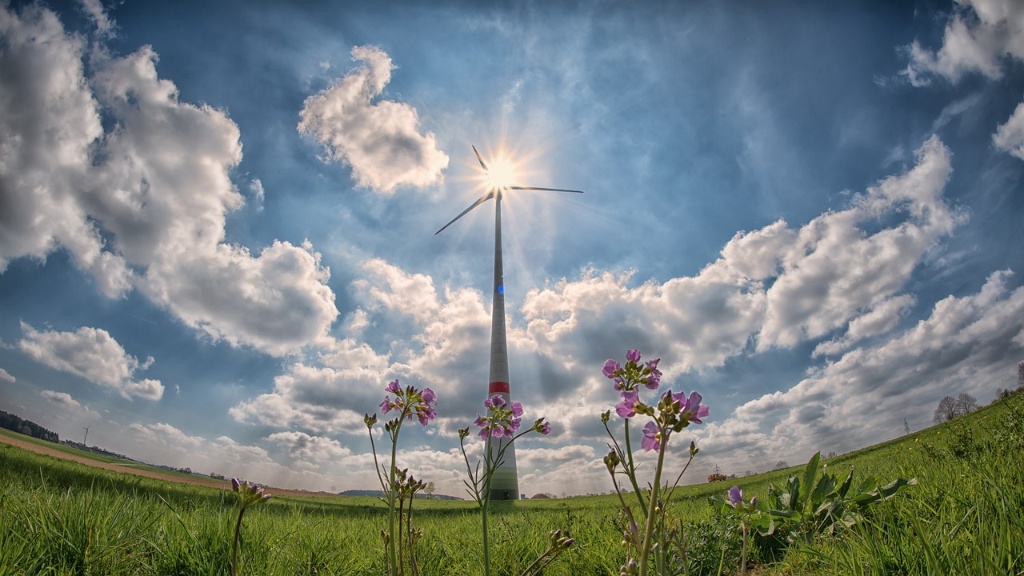In ecology, the laws of thermodynamics apply to ecosystems just as they do to any other closed system. In a closed system, energy cannot be created or destroyed, only converted from one form to another. As a result, the total amount of energy in a closed system always remains constant. The first law of thermodynamics, also called the law of conservation of energy, states that the total amount of energy in a closed system remains constant over time. The second law of thermodynamics, also called the law of entropy, states that in a closed system, the amount of energy available for work decreases over time.
The laws of thermodynamics relate to ecology in the sense that they help to explain why certain ecosystems are more stable than others. In particular, the first law of thermodynamics (the law of conservation of energy) states that energy cannot be created or destroyed, only converted from one form to another. This is significant in ecology because it means that ecosystems are sustained by the flow of energy through them, and that any disturbance to that flow can potentially cause the ecosystem to collapse. The second law of thermodynamics (the law of entropy) states that in any closed system, entropy (disorder) will always increase over time. This is significant in ecology because it means that ecosystems are constantly under threat of becoming increasingly disordered and chaotic, and that only by maintaining a constant input of energy can they maintain a stable balance.
How the laws of thermodynamics relate to living organisms?
The second law of thermodynamics states that entropy always increases over time. This means that the universe is constantly moving towards a state of disorder. However, living organisms are able to maintain order in spite of their changing surrounding environment. This is because living organisms create ordered biological structures by increasing local entropy. In other words, they use the entropy around them to create order within themselves. This is one of the key ways that living organisms are able to maintain order in spite of the entropy of the universe.
The First Ecological Law of Thermodynamics states that biological processes use captured energy (input) to move further from thermodynamic equilibrium and maintain a state of low-entropy and high exergy relative to its surrounding and to thermodynamic equilibrium. This law is important because it helps to explain how life is able to maintain itself and how ecosystems can function.
What is the importance of laws of thermodynamics in the balance of ecosystem
The Second Law of Thermodynamics states that entropy will always increase over time. However, ecosystems are open systems that are not in thermodynamic equilibrium. They receive energy from the sun, which helps to offset the entropy that is created by the formation of biological structures. In other words, ecosystems are able to continue to function because they are constantly receiving energy from outside sources.
The Second Law of thermodynamics is one of the most important laws in physics. It states that the entropy on Earth can only increase unless there is an external source of energy. This external source is the Sun, which makes Earth an open system. The entropy on Earth is constantly increasing as the Sun provides energy to the Earth.
What is the first law of thermodynamics in ecosystem example?
The first law of thermodynamics is a law that states that energy can neither be destroyed or created, it can only change forms. An example of this in an ecosystem would be when a plant absorbs the sun’s energy and photosynthesizes, storing the energy as glucose. The plant can then use this stored energy to fuel its growth or to provide food for animals that eat the plant. The energy is not destroyed when the plant uses it, but it is converted from one form (sunlight) to another (glucose).
The energy flow in the ecosystem follows the second law of thermodynamics. This law states that energy always flows from areas of high concentration to areas of low concentration. In an ecosystem, this means that energy flows from the sun to plants, from plants to animals, and from animals to decomposers.
Why the law of thermodynamics is important in biology?
The laws of thermodynamics are important unifying principles of biology. These principles govern the chemical processes (metabolism) in all biological organisms. The First Law of Thermodynamics, also known as the law of conservation of energy, states that energy can neither be created nor destroyed.
The study of thermodynamics provides us with a way of understanding how matter and energy flow through the natural world. The laws of thermodynamics tell us that matter can neither be created nor destroyed, and that energy can be converted from one form to another. These laws help us to understand the way the environment works, and how we can use energy resources efficiently.
What is the significance of thermodynamics in environment
Thermodynamics is the study of heat and its relationship to energy and work. It is the fundamental basis of many engineering fields and the profession of environmental engineering is no exception. In particular, the design and operation of many types of pollution control equipment must be based on the principles of thermodynamics.
The second law of thermodynamics states that when energy is transferred, some of it is always released as heat. This loss of energy due to heat makes many biological systems inefficient. In food chains, energy is lost as heat between different trophic levels. Consumers only gain a small percentage of the energy that is stored in their food.
What is 2nd law of thermodynamics in ecology?
A system in thermodynamic equilibrium cannot spontaneously change. This is because any potential for change would require the exchange of energy or matter with the surroundings, and in equilibrium there is no such exchange. This means that the entropy of an equilibrium system is at a maximum, and any change would result in a decrease in entropy (ie. a decrease in the disorder of the system).
Energy flow in an ecosystem always follows a unidirectional path. This is because the ecosystem is subject to the two basic laws of thermodynamics. The first law of thermodynamics states that energy can neither be created nor destroyed within the system. And the second law of thermodynamics states that energy always flows from areas of high concentration to areas of low concentration. This is why energy always flows from the sun (high concentration) to the earth (low concentration).
What are the two laws of thermodynamics and their effects or application in an ecosystem
The First Law of Thermodynamics governs energy as it relates to living organisms. This law states that total energy in a closed system is neither lost nor gained. The only thing that happens is that it is transformed. In other words, the total amount of energy in the universe is always the same. It can change form, but it can never be created or destroyed.
The Second Law of Thermodynamics states that entropy constantly increases in a closed system. Entropy is a measure of the amount of energy in a system that is unavailable for work. The more entropy there is, the less work can be done. systems tend to move towards a state of greater entropy. This is why, over time, things tend to break down and get more disorderly.
Ecosystems are not exempt from the Second Law of thermodynamics. This law states that in any closed system, entropy (disorderliness) will always increase over time. In order for ecosystems to maintain their complexity and function, they need a constant supply of energy to synthesise the molecules they require to counteract this tendency.
How does the first law of thermodynamics apply to photosynthesis?
The law of thermodynamics is a scientific law that states that energy cannot be created or destroyed, only transformed from one form to another. This means that the amount of energy in a system (such as leaves during photosynthesis) cannot exceed the amount of energy that is being input into the system (such as the absorbed sunlight). For example, if 200 units of sunlight energy strike a leaf, no more than 200 units of energy can be held as carbohydrates produced via photosynthesis.
One of the most important processes in cells is energy production. This production is regulated by the First Law of Thermodynamics. The First Law of Thermodynamics states that energy is conserved in a closed system. In other words, the amount of energy in a system remains constant over time. This means that the energy used by cells to perform processes must be replenished. Otherwise, the cell will eventually run out of energy and die.
Warp Up
Thelaws of thermodynamics are a mathematical model of how energy is transferred and transformed within a system. In ecology, the term ecosystem refers to a unit consisting of all the organisms in a particular area, interacting with each other and with their physical environment. The first law of thermodynamics, also known as the law of conservation of energy, states that energy cannot be created or destroyed, but only transformed from one form to another. The second law of thermodynamics, also known as the law of entropy, states that in any closed system, the overall level of disorder (entropy) always increases over time. In an ecosystem, energy is constantly being transferred and transformed between the different organisms and their environment. The laws of thermodynamics can be used to model and understand the complex interactions between the different components of an ecosystem, and how these interactions affect the overall stability and function of the ecosystem.
The laws of thermodynamics are important in ecology because they govern the transfer of energy between different systems. These laws help us to understand how energy is used and lost in ecosystems, and how this affects the overall balance of the ecosystem.





